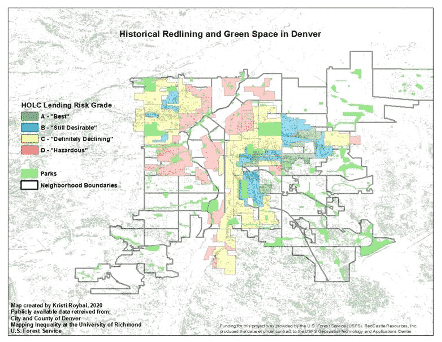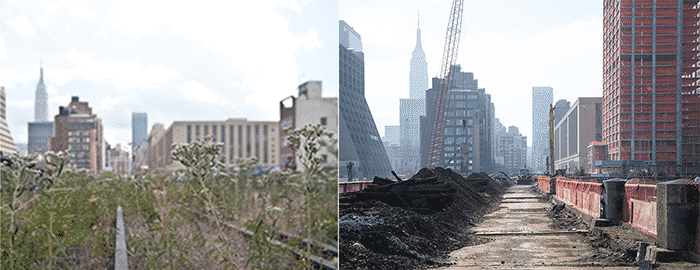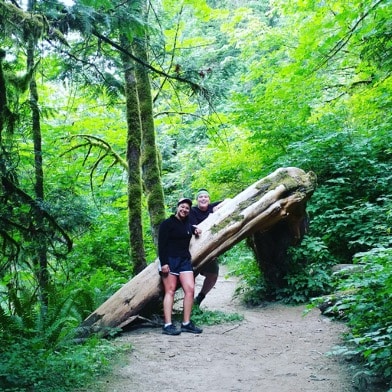
The Importance of Green Space in Our Cities
By Chante Lee
Chante Lee is a 2021 fall fellow at Green 2.0. She is currently a senior at Western Washington University in Bellingham, Washington where she is finishing her last quarter as an Urban Planning and Sustainable Development major with a focus in Environmental Justice. She has also been extremely involved in the Ethnic Student Center on campus. In addition, Chante has worked at Starbucks part-time as a barista since high school and throughout college. She loves collecting houseplants and cooking new recipes. In this blog post, Chante discusses the importance of green space accessibility and her interest in pursuing urban planning as a career.
When I started to look at career paths I wanted to work in a field that could help people. So I asked myself, when it comes to communities of color, who has the most power both historically and today? This was easy to determine by looking at local government structures but the bigger question is: What forces of power shape communities?
City planners have enormous access to power to influence reshaping cities and neighborhoods. I believe it has been an abused power that has affected communities of color for decades. Because of this, I continue to pursue a career in urban planning to help in the process of dismantling these oppressive policies and institutions.
One area of focus to undo oppressive planning processes is the approach to green space. Green spaces are areas like parks, fields, gardens, lakes, rivers, and wetlands. They can also be outdoor recreation areas for hiking, mountain biking, snowboarding/skiing, rock climbing, and other outdoor activities. In the past, it was seen as a luxury activity only accessible to those who are in upper-class white communities, and thus it was incorporated into these neighborhoods.

Today they are still seen as a luxury by class and are protected by historic racist and classist policies like redlining, single-family zoning, sundown towns, and other historic policies based on segregation in the U.S. The inequalities that we see in access to green spaces are not only helped by historical provisions and policies but also by the current movement of gentrification of historically significant Black and Brown communities.
But why is green space so important? As the population increases throughout the world, to uphold sustainable standards of living, we are naturally going to be gravitating to denser populated areas, like major cities.
Green spaces in these urban settings are important because it not only adds greenery to the most concrete and steel environments, but because of the health benefits.
A study done by the World Health Organization on Urban Green Space Intervention and health underscores how green spaces are beneficial to people because it provides mental, emotional, and physical health benefits. The report also states that “the evidence shows that urban green space has health benefits, particularly for economically deprived communities, children, pregnant women, and senior citizens. It is therefore essential that all populations have adequate access to green space, with particular priority placed on provision for disadvantaged communities. While details of urban green space design and management have to be sensitive to local geographical and cultural conditions, the need for green space and its value for health and well‐being is universal.”
Green space has the opportunity to help and heal communities and should be a resource accessible for all. Accessibility doesn’t just mean that it should be easily accessible physically, but this also means that current green spaces need to be maintained and invested in. Often in low-income communities, there is physical access to green spaces but they are not appealing because of safety issues and other factors that could be addressed with maintenance and investment.

These spaces can also be created anywhere, even in dense urban settings, like abandoned lots, overgrown empty properties, and other spaces that aren’t being utilized. There is also the option of transforming historic buildings and utilities to become green spaces. A great example of this is Manhattan’s High Line Park, which used to be an elevated railroad built in the 1930s and then abandoned by the 1980s, and now has turned into an elevated green space with native vegetation and beautiful wildflowers.

I have had the privilege to live in Washington State where green space and outdoor recreation are the norm around here, and we have vast amounts of it. Being able to experience green spaces and being surrounded by them planted a little seed of interest in the environment, and today I incorporate environmental justice into my work for the benefit of vulnerable communities. I want others to have the opportunity to experience this, it is everyone’s right.
For more information about Chante Lee, follow Chante on LinkedIn.